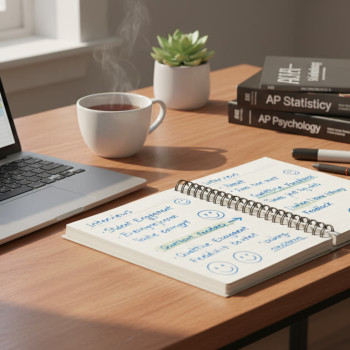Why this matters: Understanding accommodations for AP exams
If your child has a disability or a temporary impairment that affects how they take tests, getting accommodations approved for AP exams isn’t just paperwork — it’s the bridge that lets your student demonstrate what they truly know. As a parent, you want confidence that the process is handled early, accurately, and in a way that keeps stress low. This guide walks you through the College Board’s accommodations process in plain language, with practical steps, realistic timelines, and examples so you can act with clarity.

Big-picture overview: Who does what?
There are three main players in the AP accommodations journey:
- Your family (you and your child) — Advocate for what your child needs, gather documentation, and keep in close contact with the school’s SSD coordinator.
- School staff — SSD coordinator and AP coordinator — The SSD coordinator requests accommodations from College Board’s Services for Students with Disabilities (SSD) office, and the AP coordinator orders the exam materials and manages logistics.
- College Board SSD — Reviews requests and documentation, approves (or asks for more information), and issues an eligibility letter that outlines approved accommodations.
Most families work through their school’s SSD coordinator. That’s usually the fastest, most reliable route. However, there are options to submit requests without school involvement if necessary (paper forms and documentation are required in that case).
Step-by-step timeline: When to start and why timing matters
Timing is one of the most important things parents overlook. Think of the accommodations process like planning for a trip: the earlier you start, the fewer surprises you’ll have.
- As soon as possible — Begin conversations with the SSD coordinator at the start of the school year or when your child decides to take an AP course. If your child is already approved for accommodations at school (IEP, 504, or classroom accommodations), mention that immediately.
- Order exam materials — AP coordinators place exam orders at school. The AP coordinator needs to know which students will require special formats or materials when ordering.
- Official SSD requests — Schools must submit accommodation requests through SSD Online by the College Board’s stated deadline for that exam year. Missing deadlines can jeopardize receiving the right format or supports for the exam.
- Temporary accommodations — If your child has a temporary impairment (like a broken arm), there are specific, earlier deadlines for digital exams—so act fast.
Bottom line: start early and keep nudging the process forward—polite reminders to the SSD coordinator and AP coordinator help ensure nothing gets missed.
Step 1 — Determine eligibility and gather documentation
Eligibility commonly aligns with accommodations your child already receives at school, such as through an IEP or 504 Plan, but College Board may request additional documentation. Here’s how to prepare:
- Gather current school accommodations records (IEP, 504 plan, teacher notes, or school-based testing).
- Collect recent professional evaluations if applicable (psychological, neuropsychological, medical documentation). These should describe how the condition affects testing and daily functioning.
- Make clear, concise notes about how accommodations are used in school and which ones seem to meaningfully level the playing field for testing.
Tip: Create a single folder (digital and/or physical) with the key documents and a one-page summary for the SSD coordinator — it makes their job easier and speeds the approval process.
Step 2 — Work with the SSD coordinator to submit the request
Schools submit requests through SSD Online. The SSD coordinator is the portal user who will:
- Create or update a student’s profile in SSD Online.
- Upload documentation and select requested accommodations.
- Submit the request to College Board for review.
Role clarity matters: your school’s SSD coordinator handles the submission; the AP coordinator ensures exam materials are ordered to match approved accommodations. As a parent, your role is to provide documentation, clarify what your child needs, and confirm submissions were made.
Step 3 — What College Board reviews and how they decide
The College Board SSD office examines the documentation and decides whether the requested accommodations are supported. Their decision focuses on whether the documentation clearly shows a disability or temporary impairment that affects test administration and whether the requested accommodation is appropriate and necessary.
If the review is missing information, College Board may request additional documentation — so plan for possible back-and-forth and respond quickly when asked.
Step 4 — Approval, eligibility letter, and what to expect next
When accommodations are approved, College Board issues an SSD Eligibility Letter for the student. This letter specifies approved accommodations and is the verification to bring to each AP exam session. Important next steps after approval:
- Confirm that the AP coordinator has included the student in the AP Exam order with the correct format and materials.
- Review the SSD Eligibility Letter with your child and the test proctor so everyone understands which supports are in place on test day.
- For digital exams, verify how accommodations will be implemented and whether any extra steps (like requesting human reader/writer for digital format) are necessary.
Step 5 — Preparing for test day with accommodations
Approval is one thing — smooth execution is another. Use these practical tips:
- Do a trial run: If the student will use a new device, assistive tech, or an embedded accessibility feature for a digital exam, have them practice under test-like conditions beforehand.
- Print and carry the SSD Eligibility Letter (or save a digital copy) the day of each exam session and ensure the room proctor has it on the roster.
- Practice with the format: extended time, breaks, or using a scribe changes pacing and stamina — build stamina with timed practice sections that mirror the accommodation.
- Confirm logistics: location of the separate room (if applicable), arrival time, and who will supervise breaks.
Real-world example
Imagine Maya, who has a documented processing disorder and receives extended time and extra breaks in school. Her SSD coordinator submits a request in October with supporting school records. College Board approves extended time and 10-minute breaks. The AP coordinator orders an alternate-format testing room and confirms on the exam roster. Maya does two full-length practice exams with extended time under supervision — by test day she’s calm, knows her pacing, and the accommodations feel familiar rather than new.
What if a request is denied or needs more documentation?
Denials or documentation requests can feel discouraging, but they’re not uncommon. If College Board asks for more documentation, gather the additional records quickly and work with the SSD coordinator to upload them. If a request is denied, you can:
- Ask for a clear explanation in writing about why the request was denied.
- Work with your school to provide stronger documentation or to clarify the nature of the functional limitation.
- Consider submitting additional supporting materials, such as updated evaluations or teacher input about how the condition affects timed testing specifically.
Remember: persistence and clarity of documentation are often the deciding factors.
Special situations: transferring schools, temporary impairments, and digital exams
Here are short notes for common scenarios parents face:
- Transfer students: If your child had previously approved accommodations, let the new school’s SSD coordinator know immediately so they can request a transfer or resubmission if necessary.
- Temporary impairments: Broken limb or short-term medical conditions can qualify for temporary supports. Those must be requested quickly; digital exam dates may have earlier cutoffs for temporary assistance.
- Digital AP Exams: Many accommodations map to digital formats, but the way they’re delivered may differ (embedded text-to-speech vs. human reader). If a human reader or scribe is needed for a digital exam, confirm that the SSD coordinator explicitly requests that support.
Table: Common AP Accommodations and what they look like in practice
| Accomodation | How It Works for AP Exams | Parent Action |
|---|---|---|
| Extended Time | Extra time (often 50% or 100%) for timed sections or full exam; may change scheduling. | Confirm exact time allowed and schedule practice sessions with that time. |
| Extra Breaks | Additional or extended breaks during exam administration. | Discuss pacing and plan supervised practice to build stamina. |
| Large Print or Braille | Exam provided in large-print or braille format; special materials ordered. | Ensure AP coordinator orders the correct special-format materials. |
| Human Reader/Scribe | Reader reads aloud questions or scribe records student responses; digital options may include text-to-speech. | Practice with the reader/scribe and clarify whether compatible for digital exams. |
| Permission to Use a Computer | Student types essays or responses instead of handwriting. | Confirm acceptable software and practice typing under timed conditions. |
Practical communication templates for parents
Clear, polite communications save time. Here are short text templates you can adapt when emailing your school’s SSD coordinator or AP coordinator:
- Initial outreach — “Hello, I’m [Parent Name], and my child, [Student Name], will be taking [AP Subject]. They have an IEP/504 that includes [brief description]. Could we meet or chat about requesting accommodations through SSD for the AP exam?”
- Documentation follow-up — “Thank you for starting the SSD request. Attached are the IEP and recent evaluations. Please let me know if College Board requests additional documents or if there are forms I should complete.”
- Deadline reminder — “Just checking in: have we submitted the SSD request for [Student Name]? I want to confirm everything is in before the College Board deadline.”
How tutoring and practice fit into the process
Accommodations are essential, but so is preparation. When your child’s testing format changes — using a computer, extra time, or a reader — they need practice in that format. This is where targeted tutoring helps.
Sparkl’s personalized tutoring offers 1-on-1 guidance, tailored study plans, expert tutors, and AI-driven insights that can be used to build pacing strategies, simulate accommodations (like extended time sessions), and strengthen the content areas that matter most on the AP exam. Tutors can also help your child get comfortable with the actual test mechanics so the accommodation feels familiar rather than unfamiliar on test day.
Tips for reducing stress and building confidence
Beyond logistics, emotional readiness matters. Here are simple ways parents can help:
- Normalize the process: Talk about accommodations as a routine support — like glasses at the eye exam — not something to be ashamed of.
- Practice the real conditions: Do at least one full practice exam in the same format and with the same accommodations your child will receive.
- Focus on strengths: Keep study sessions balanced so your child feels competent and not only defined by their accommodations.
- Use checklists for test day: eligibility letter, stationery, device chargers, a clear plan for transportation, and a calm breakfast schedule.
What to watch for with digital AP exams
Digital testing has introduced new efficiencies and new wrinkles. Many accommodations translate directly to digital formats, but confirm whether it will be an embedded accessibility feature (like text-to-speech) or a separate human-supported setup. If your child is switching from handwriting to typing, prioritize typing fluency practice under the same time constraints they’ll face on test day.

Final checklist for parents
Use this quick checklist to keep the process on track:
- Have you spoken to the SSD coordinator and AP coordinator? — Yes / No
- Is the documentation (IEP, 504, evaluations) organized and ready to upload? — Yes / No
- Has the SSD request been submitted through SSD Online? — Yes / No
- Has College Board approved accommodations and issued an eligibility letter? — Yes / No
- Has the AP coordinator included the student in the AP order with the correct format/materials? — Yes / No
- Have you practiced exam sections with the approved accommodation(s)? — Yes / No
- Do you and your child have a test day plan and the eligibility letter ready? — Yes / No
When to get extra help
If any of the following are true, consider bringing in targeted support:
- College Board requests more documentation and you’re unsure what would strengthen the submission.
- Your child is anxious about a new test format or assistive technology.
- You want a structured, measurable practice plan for pacing under extended time or for typing fluency.
Sparkl’s tutors can help with focused practice sessions that simulate the approved testing conditions and provide a calm, structured environment for building endurance and confidence. Their personalized plans and expert tutors can be particularly helpful when a student needs to adjust to a digital testing format or a new accommodation.
Closing thoughts: advocacy, preparation, and calm
Requesting accommodations for AP exams can feel bureaucratic at times, but with early planning, organized documentation, and steady advocacy, you can make it straightforward. Think of accommodations as a toolkit that lets your child show what they know — and your role as a parent is to make sure the tools are in place and well-practiced.
Start early, stay organized, and lean on school staff and trusted tutoring support when needed. The peace of mind you gain from being prepared will be returned tenfold on test day when your child walks in knowing the supports are in place and they’re ready to do their best.
If you want help getting started
Begin by contacting your school’s SSD coordinator, gather current IEP/504 documentation, and schedule a practice session under the expected accommodation conditions. If you’d like structured practice tailored to your child’s accommodation, consider a few 1-on-1 tutoring sessions to simulate the test and build pacing strategies — that practical preparation often makes the biggest difference.
You’ve got this — and your child is closer than you think to taking an AP exam that truly reflects their ability.





















No Comments
Leave a comment Cancel